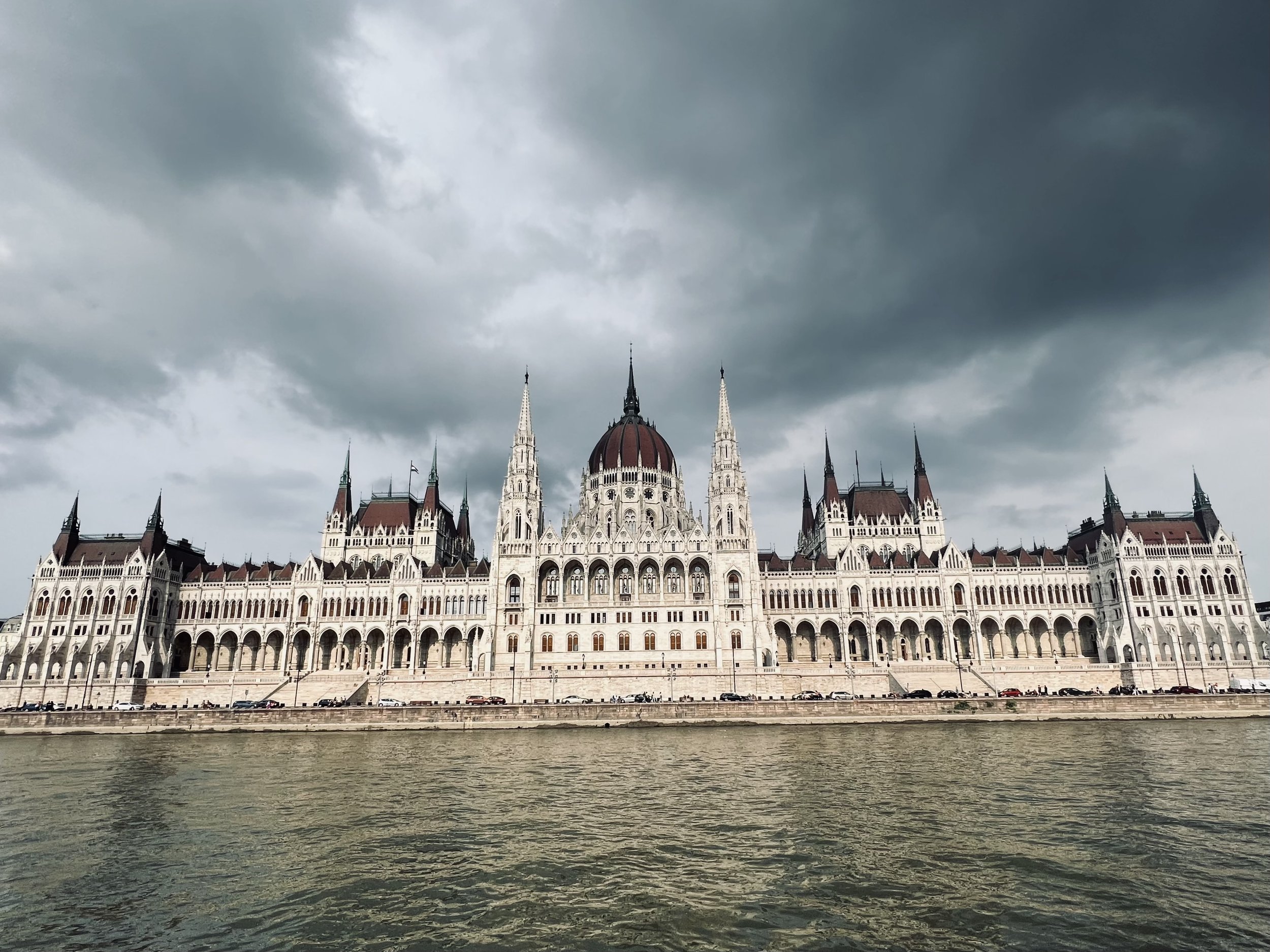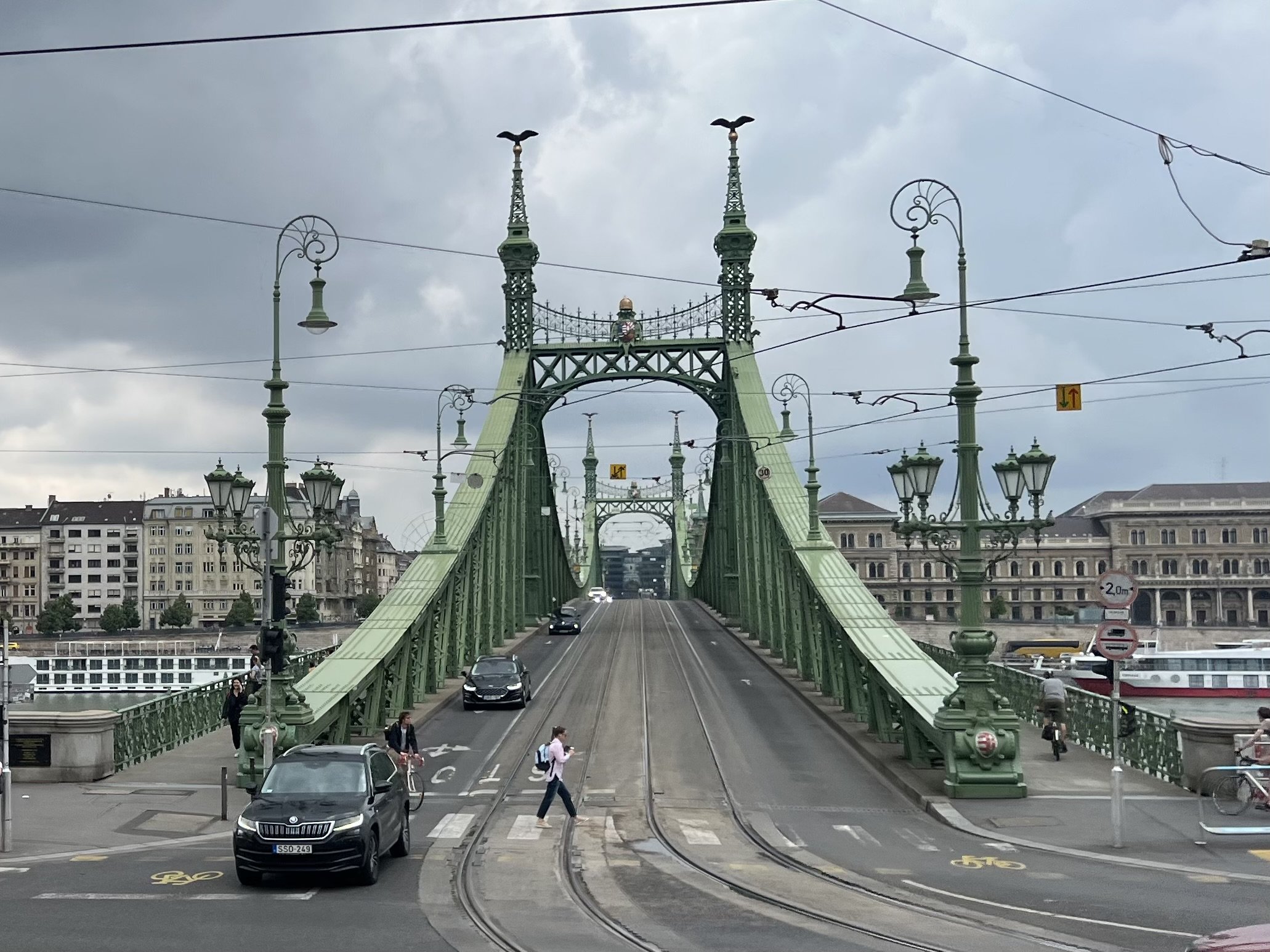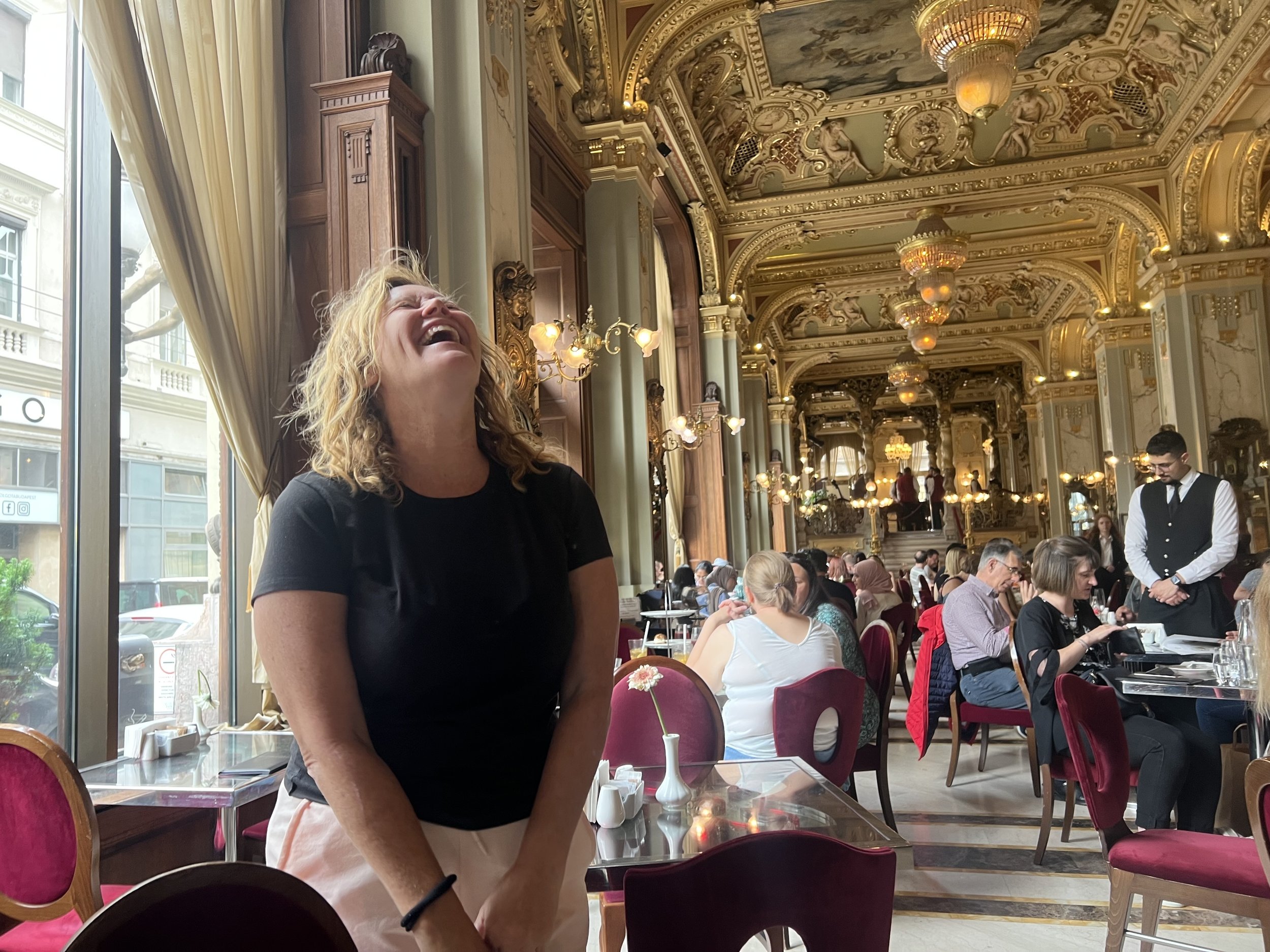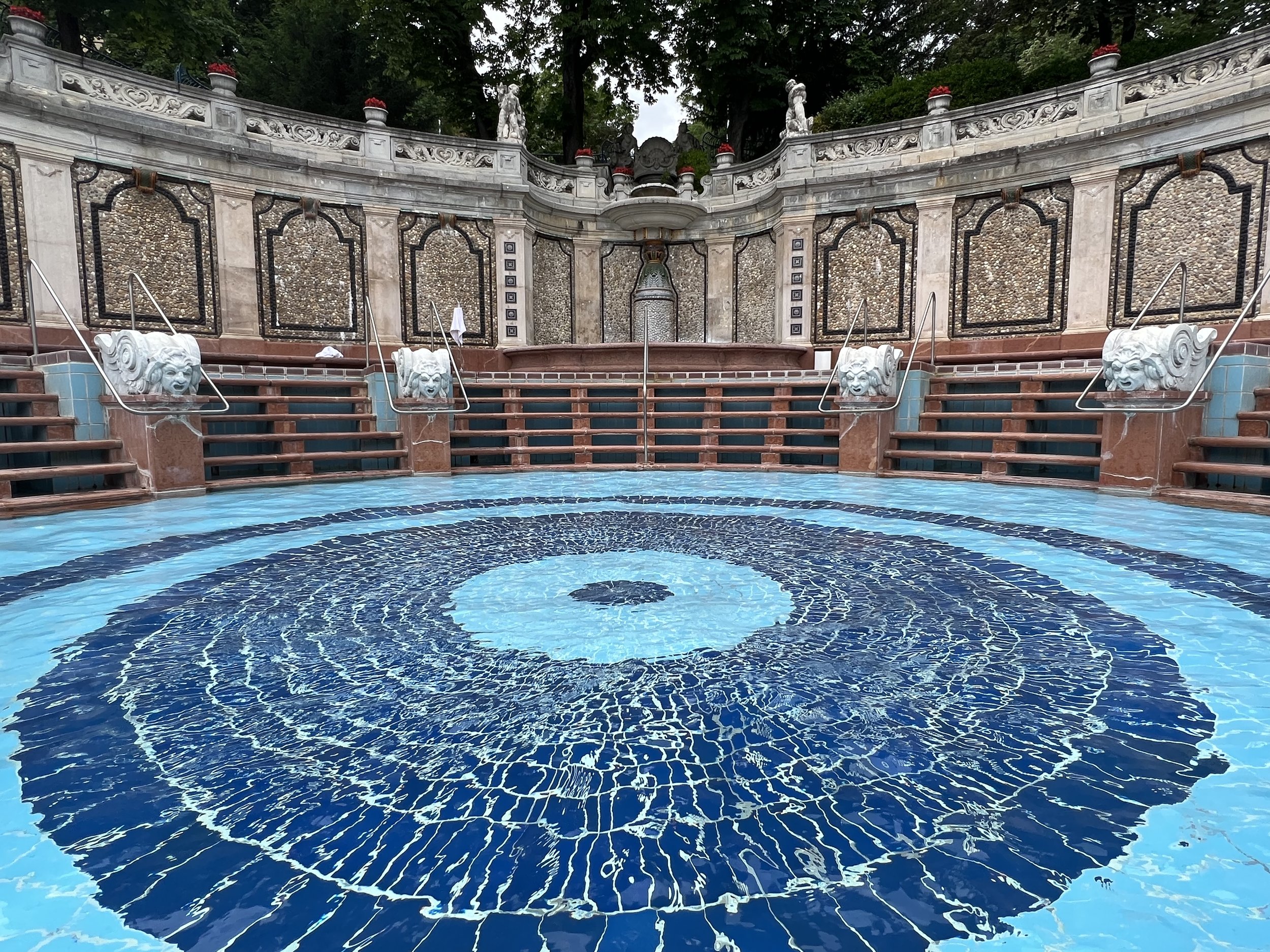Budapest Hungary
After a quick two nights in Mostar and Sarajevo in Bosnia and Herzegovina we boarded a bus and headed to Budapest, Hungary. I’ve heard about Budapest all my life as it was the birthplace of my eldest sister’s boss who was a neurologist in London, Ontario. I always pictured Budapest being very colourful and almost bohemian in nature, and full of very educated people. I’m not sure why I imagined it being that way, maybe a mix of hearing stories from Dr. Kertesz and having an overactive imagination. In reality, Budapest is a city with beautiful architecture and warm, friendly people.
Parliament Building
Budapest is the capital city of Hungary and it dates back to the 1st Century AD when the Romas conquered and fortified it. Skipping a few centuries forward, we see Buda being occupied by the Ottoman Turks while Pest remained under the Hasburg Dynasty control. It wasn’t until the 17th Century that the Hasburgs regained Buda and in 1873, merged with Óbuda to form present day Budapest. Jump further ahead to WWII when Budapest was occupied by the German Nazi’s resulting in massive loss of life and the destruction of the city. Following the war, it became part of the Eastern Bloc ruled by communism. After the fall of communism in 1989, it became a democratic society and joined the European Union in 2004 solidifying its ties with Europe.
Budapest lies on either side of the Danube River and is divided into districts within the old cities of Buda and Pest. The easiest way to remember if you are in Buda or Pest is by the way you’re looking; if you look “up”, you’ll see Pest and looking down means you’re looking at Buda. Of course, we took the Hop On/Off Bus to get the lay of the land and with that same ticket, took a river cruise to see the landmarks from a different perspective. The view of the Parliament Building is spectacular from the Danube.
Budapest is known for its bridges that span the Danube River connecting Buda and Pest. The Chain Bridge, probably the most iconic, was the first permanent crossing between the two cities and was completed in 1849. The white bridge is named after Empress Elizabeth of Austria affectionately known as Sisi. It was destroyed in WW II but was rebuilt and is known for its elegance. The green Liberty bridge was built in 1896 and connects the Gellert Hill with the Great Market Hall where we had lunch. There are two other bridges, namely the Margaret Bridge that connects Margaret Island to the mainland and finally connecting the southeastern end of the city to the mainland is the Rákóczi Bridge.
Although you can purchase tickets to enter most of the attractions, and there are plenty to see, we’d say the best thing to do is to walk. Budapest is pretty compact so you can get to the attractions while tracking thousands of steps. Walking allows you to not only see the main attractions, but also to take in the nuances, nooks and crannies of the neighbourhoods. There is public transportation to hop on when your tootsies get a bit sore.
Although we stayed in the city for five nights to tour around and catch up on life, I’d recommend a 3-4 night stay as there is a lot to do and see. There are plenty of accommodations within each district and we stayed in District VII - a little funky neighbourhood close to the bars, restaurants and attractions. Although we got an Airbnb for this part of our trip allowing us to eat most of our meals at home, the highlight for me was to eat a late lunch at the The New York Cafe. The opulent cafe was built in the late 19th century and was home to artists, writers and those of affluence. It’s a hot spot with tourists and we saw queues every day. It’s recommended to make reservations (we didn’t) and expect to spend a bit of money. It’s not a place you go to everyday, so think of it like a special treat.
New York Cafe
During our stay, we managed to see the Hungarian Parliament Building (exterior only - we weren’t paying the exorbitant entrance fees), the Buda Castle and ate at the Great Market Hall, but I’d say the highlight experience for me was our Airbnb tour of District VII - where we were staying - the Jewish Quarter. Our tour with Atilla was really interesting as it gave us an historical account of the Jewish Ghetto of Budapest and its revival.
In the late 18th century Jews began to settle in various neighbourhoods throughout the city causing tension and anit-semitism. As a result, during the Hungarian Revolution in 1848, Jews faced persecution and the imposed restrictions including confinement to an area within the city now known as the Jewish Ghetto. During WW II, more than 70, 000 Jews were forcibly relocated to the ghetto living in deplorable conditions and eventually being deported to Nazi concentration camps.
Today, the area, known as the 7th District, is hip and trendy with a variety of restaurants, cafes and galleries that attract many tourists. It’s also home to many “Ruin Pubs” that are just that - drinking holes in old abandoned buildings. Unfortunately, just like many cities, the gentrification of the neighbourhood, although bringing in economic development, has resulted in sky-high property prices, displacement of long-time residents and the possible erosion of the “feel’ and heritage of the Jewish Ghetto. The character that we speak of is evident in various street art, both amateur and professional, displayed throughout the neighbourhood.
Portrait of “Angel of Budapest” Spanish Diplomat Angel Sanz Brie who saved Hungarian Jews from deportation - Spanish Artist Okuda
The thermal baths in Budapest are a popular attraction that showcases the city's rich history and unique spa culture. Budapest is known as the "City of Spas" due to its abundance of thermal springs, and these baths have been cherished by locals and visitors alike for centuries. We finished our stay in Budapest with an afternoon at the Gellért Thermal Bath located in the Géllert Hotel, which unfortunately closed for renovations. It’s decorated in Art Nouveau and has both indoor and outdoor pools. Bring your own towel, swim wear and check their website before going to confirm other necessities and hours of operations. It’s a bit pricey, but it truly was a beautiful setting and a relaxing way to end our time in Budapest.
Géllert Thermal Baths
Budapest has had many challenges in the past, and some persist today as young people tend to leave for a more prosperous life abroad, but it still stays strong with its impressive architecture, landmarks and cultural activities. It’s as charming as I imagined it as a little girl - right out of a storybook.
For more on our trip to Budapest, visit our YouTube Channel here:
Cheers!









